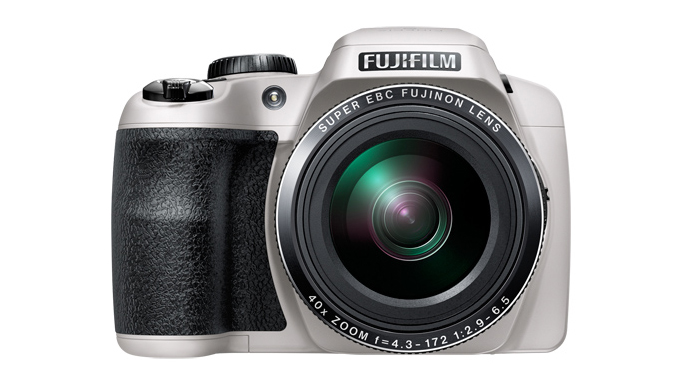TechRadar Verdict
Pros
- +
Feels great in the hand
- +
Awe-inspiring zoom
- +
Well thought-out buttons
- +
Great movie recording
Cons
- -
Bit wobbly at distance
- -
Some long winded settings
- -
Difficult to select focus points
- -
Old EVF
Why you can trust TechRadar
The Fujifilm FinePix S8200 is the company's newest addition to its venerable S series of superzoom or bridge cameras, squaring up against the likes of the Nikon Coolpix L820 and the Panasonic Lumix LZ30.
While at first glance it might be difficult to tell them apart, the Fuji FinePix S8200 zooms quite a bit further than its predecessor the Fuji FinePix S4500, packing a whopping 40x optical zoom in front of its 1/2.3-inch CMOS sensor.
It's not all about zoom though - the new lens comes with several more welcome improvements, seeing an additional stop of aperture at the short end, now just f/2.9, as well as reduced minimum focus distance.
There are plenty of upgrades under the hood of the Fuji S8200 - which is priced at £244.99/US$299.95 (around AU$405) - as well. The new 16.2 million pixel sensor offers up additional sensitivity, maxing out at a respectable ISO 12800.
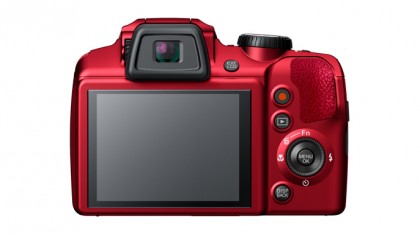
As well as that, the change from a CCD-based sensor to a less power-hungry CMOS means that this new model can shoot for a lot longer with the four standard AA batteries it uses, while also sporting a larger 460k-dot display.
Sadly, the Fuji S8200's built-in EVF is identical to the one found in the previous model, and at just 201k-dot, it's beginning to show its age.
You'll find the company's full suite of in-camera adjustments and imaging modes for pretty much any shooting situation, such as exposure adjustment and creative filters.
It also offers full manual and semi-automatic exposure control, as you'd expect. It offers a full range of autofocus modes including tracking and area selection, as well as face detection and the standard multi/spot/average metering options, which Fuji refers to as photometry.
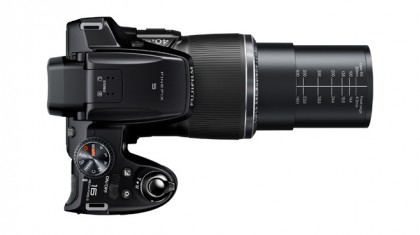
New to the Fuji S8200's feature suite is a pseudo 3D stitching mode as well as some rather impressive improvements to the movie modes. Indeed, this camera now brings Full HD recording, enabling 1080i recording at up to 60fps.
What impressed us more than the maximum size, though, was the maximum frame rate. By choosing to sacrifice image size, it's possible to double the frame rate and get some quite extraordinary results; a tiny 320 x 120 fame will get you a droplet-freezing 480fps, for example. This may not be a feature you use every day, but it's incredibly fun - even if the results are tiny.
Build quality and handling
A little larger than its predecessor, the Fuji S8200 retains much of the same design, with near-identical top layouts and little changed on the rear of the camera either. That isn't to say that there are no differences, however.
Gone is the directional pad, replaced with a rotational dial, which serves double duty, both giving quick access to the usual macro, flash and timer settings, while also enabling you to change, depending on mode, the aperture, shutter speed or brightness with a flick of the thumb.
Unfortunately the camera's overall diminutive stature means that the dial is still in a position that may require a little bit of thumb contortion if your hands are fairly large. Otherwise, the body fits perfectly in even a ham-sized grip, with the useful addition of a dedicated video recording button on the rear and a secondary zoom selector where the left thumb sits.
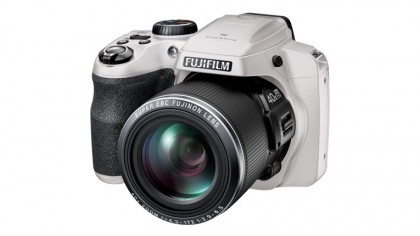
The Fuji S8200's body feels well constructed and solid overall, despite being a fully plastic casing. Gone is the fully textured body, leaving just a small section on the rear thumb rest.
While some features are right where you want them, we found that some settings were either buried too far under the menus or required far too many key presses. Deleting an image is a slightly drawn out process, for example, and it is a little bit of an annoyance when the camera toggles out of whatever timer setting you have it at after each frame.
Accessing AF modes also takes a little more time than you'd expect, with area selection needing to be accessed via the main menu every time you want to shift the focus point.
Overall though, most features are where you'd expect to find them and it doesn't take long to familiarise yourself with the Fuji S8200's system.
Performance
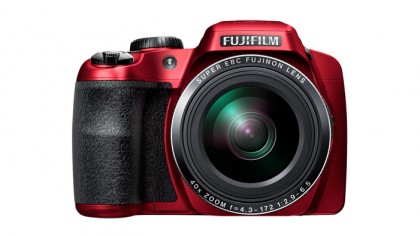
For the most part, the Fuji FinePix S8200 offers pretty consistent performance in terms of exposure and balance. Images lean a little towards the over-exposed side for some subjects, particularly at the far end of the zoom range.
Although there is a wide sensitivity range offered, there's a serious degradation in quality past the ISO 1600 mark, which will probably categorise the higher settings as last resort material. That said, it's always useful to have a bit more sensitivity in reserve for when you absolutely have to get that once-in-a-lifetime shot.
In terms of the optics themselves, we found reasonably good performance overall, with no noticeable chromatic aberration throughout the range, thanks to the included ED lens elements. As you'd expect, you lose a little crispness at maximum zoom, but there was still an impressive amount of detail visible.
You will need a pretty steady hand if you expect to get any images at that range, however, because even with the built-in stabilisation, it's hard to get a stable shot even in bright light. At the wide range of the lens, however, we found pretty good sharpness across the whole of the image, with no barrel distortion or warping.
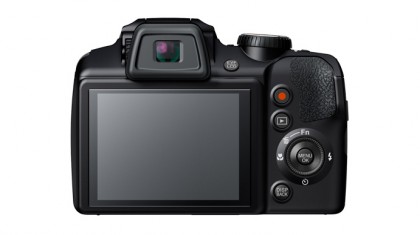
Overall, features were responsive, with high-speed bursts being processed with surprising speed considering the number of images captured - the Fuji S8200 manages 10fps at full resolution.
The built-in panorama mode features Fuji's responsive Motion Panorama system, which offers easy, fast capture though a guided sweep of the camera. What's more, it's conveniently accessible simply by rotating the mode selection dial, and couldn't be easier if it tried.
While most of the camera's other features performed well, the quality of the screen was a little disappointing. We found ourselves struggling to discern if a shot was in focus from the screen alone, especially in bright outdoor conditions.
Sadly, the ageing EVF system didn't make much of a difference, with a cold colour cast making it difficult to gauge shots. This isn't by any means a damning problem, it's just a little shame. Check out our sample images and labs results on the following pages to see what we mean.
Verdict
While the Fuji S8200's reach is certainly incredible, we found it, ironically, performing best under close-up conditions. And while it has a host of new features, we can't honestly say that there is much that sets it apart from other cameras in the same bracket.
We liked
Solid build and construction means that the camera feels good in your hand. There's also no denying that with that zoom range, both at the extreme telephoto and at the macro, you can get as far or as close as you could ever want.
We disliked
The lack of support for some features you'd come to expect in a modern camera, such as raw support and a higher quality screen, do tend to hold it back, as do a few hard to access routes to certain options.
Final verdict
That said, while the similarly priced Nikon L820 features a smaller build and a much higher resolution screen, coupled with comparable features, you'll struggle to find a similar model with the same zoom range as the Fuji S8200.
First reviewed 9 August 2013
